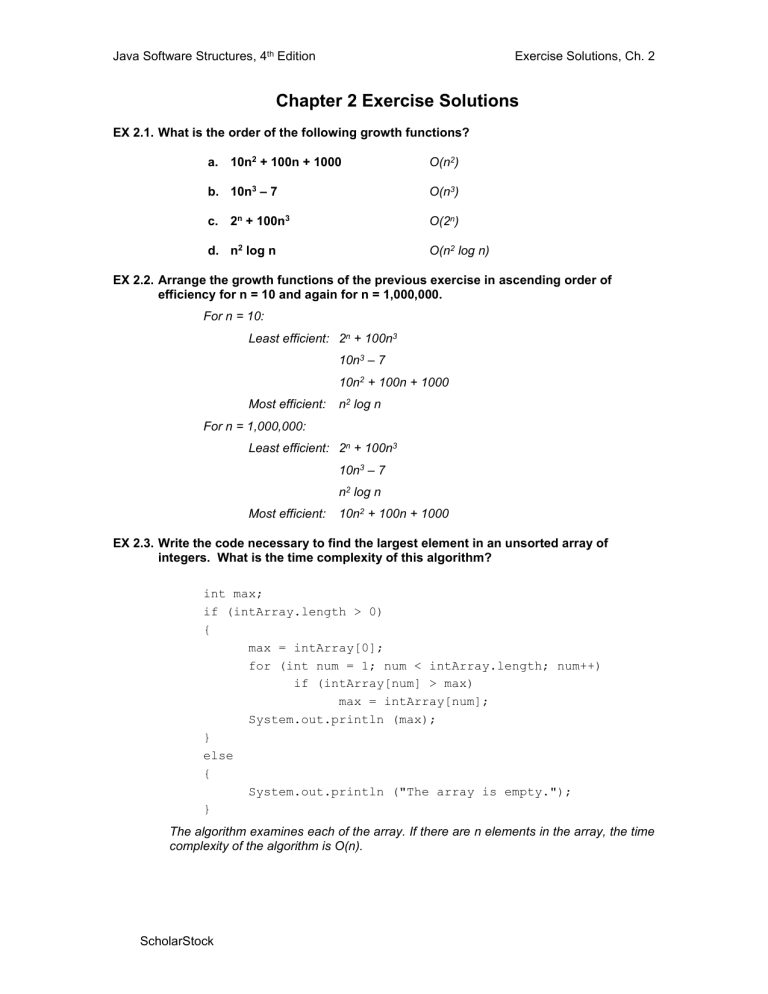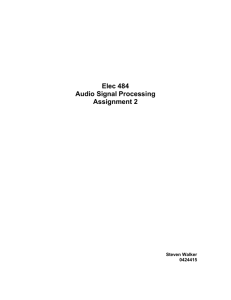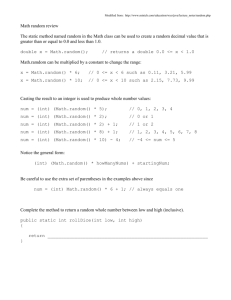Java Software Structures: Chapter 2 Exercise Solutions

Java Software Structures, 4 th Edition Exercise Solutions, Ch. 2
Chapter 2 Exercise Solutions
EX 2.1. What is the order of the following growth functions? a. 10n 2 + 100n + 1000 b. 10n 3 – 7 c. 2 n + 100n 3 d. n 2 log n
O(n
O(n
O(2
O(n
2
3 n
2
)
)
)
log n)
EX 2.2. Arrange the growth functions of the previous exercise in ascending order of efficiency for n = 10 and again for n = 1,000,000.
For n = 10:
Least efficient: 2 n + 100n 3
10n 3 – 7
10n 2 + 100n + 1000
Most efficient: n 2 log n
For n = 1,000,000:
Least efficient: 2 n + 100n
10n 3 – 7
3 n 2 log n
Most efficient: 10n 2 + 100n + 1000
EX 2.3. Write the code necessary to find the largest element in an unsorted array of integers. What is the time complexity of this algorithm? int max; if (intArray.length > 0)
{ max = intArray[0]; for (int num = 1; num < intArray.length; num++) if (intArray[num] > max) max = intArray[num];
System.out.println (max);
} else
{
}
System.out.println ("The array is empty.");
The algorithm examines each of the array. If there are n elements in the array, the time complexity of the algorithm is O(n).
ScholarStock
Java Software Structures, 4 th Edition Exercise Solutions, Ch. 2
EX 2.4. Determine the growth function and order of the following code fragment:
} for (int count = 0; count < n; count ++)
{ for (int count2 = 0; count2 < n; count2 = count2 + 2)
{
}
System.out.println(count, count2);
The outer loop will be executed n times. The inner loop will be executed (n+1)/2 times. Therefore, the growth function for the code fragment is n*((n+1)/2) = (n
That is order n 2 .
2 + n)/ 2.
EX 2.5. Determine the growth function and order of the following code fragment:
} for (int count = 0; count < n; count ++)
{ for (int count2 = 0; count2 < n; count2 = count2 * 2)
{
}
System.out.println(count, count2);
The outer loop will be executed n times. The inner loop will be executed log n times. Therefore, the growth function for the code fragment is n*(log n). That is order n log n.
EX 2.6. Write a program that will create a table similar to the one in Figure 2.1 for any given growth function.
Solution not provided at this time.
ScholarStock







